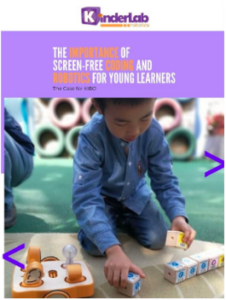eCampus News: Why Every Preservice Teacher Should Learn Robotics
In this eCampus News article, Why Every Preservice Teacher Should Learn Robotics, Katherine Blagden, Instructor & PhD Candidate at Roger Williams University, describes incorporating robotics with her students preparing to be teachers. “Learning to work with robotics can give elementary preservice teachers skills for all of the subjects they will teach.”
The article reads in part
“Preservice teachers greatly benefit from learning how to use and integrate innovative robotics to enhance their teaching skills. They are eager to engage in courses that use robotics to prepare them for their future classrooms. Teaching preservice teachers, I find that some of my favorite classes—and those most captivating and useful for my students—are the classes that include teaching with robotics.
Robotics are great for teaching topics such as coding and the engineering design process. However, when new teachers work on incorporating robotics in the classroom, they also practice important skills including differentiating instruction, tackling multiple standards in a single project, securing their own classroom funding, and more. Practice with robotics is essential preparation for teaching STEM subjects, but it can also offer lessons that are helpful far beyond the science and engineering topics.
Even in the best of times, most elementary teachers are stretched thin, with too much to teach and too little time to do it in. Elementary educators can’t teach robotics in isolation. They simply don’t have time. They do have time, however, to teach robotics lessons that also address literacy, art, social studies, science, and math standards.
I often use a robot called KIBO to integrate coding into a variety of cross-curricular lessons. For example, students can build dragons out of craft paper, attach them to KIBO’s platform, and code the robot to dance as part of a celebration of the Chinese New Year. I’ve also had my preservice teachers decorate their robots as boats and then program them to follow the routes of famous explorers that creates a fun way to model teaching key social studies standards.
Hands-on projects like these incorporate many different kinds of learning, so I always ask preservice teachers to look back whenever they’ve finished a project and identify the different standards and practices they used, which may include ISTE technology standards, science and engineering practices, cross-cutting concepts, computational thinking, and disciplinary core ideas to name a few.
There is no better way to help a preservice teacher get excited about STEM than to put them in the role of a student, give them a robot, and then watch them have a blast solving a problem and completing a challenge.”
Read the full article.



















